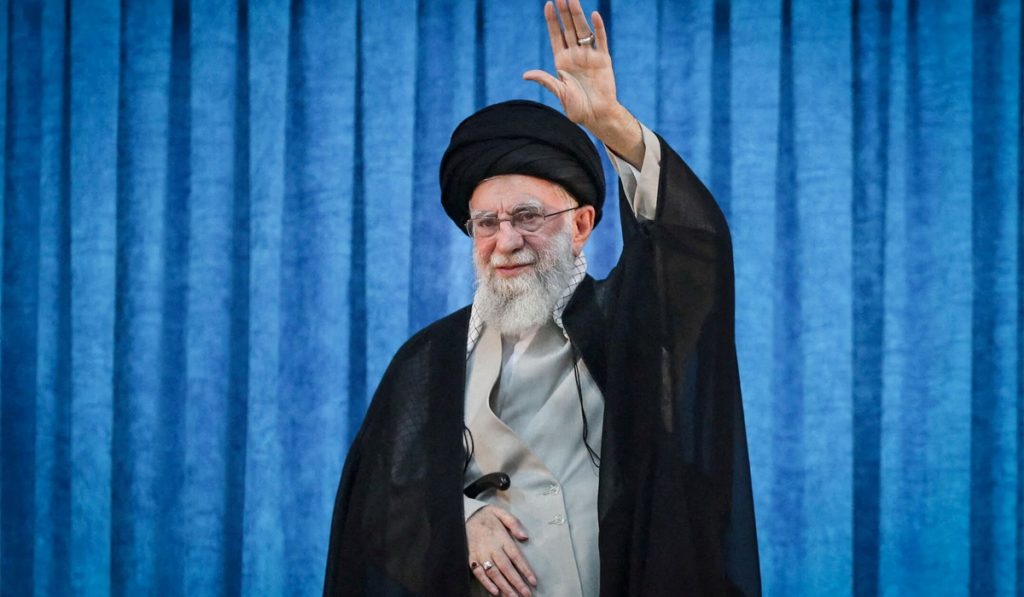As Israeli airstrikes rat t l e Te h ra n and its military industrial sites, the geopolitical tremors are being felt well beyond Iran’s borders. In a recent Fox News interview, Israeli Prime Minister Benjamin Netanyahu didn’t mince words. When asked if the current military escalation could result in a regime change in Iran, Netanyahu stated, “It could certainly be the result because the Iran regime is very weak.” His reasoning was not just national survival but global security.
“We can’t have the world’s most dangerous regime have the world’s most dangerous weapons,” he said. In the backdrop of this confrontation, a startling claim surfaced from Reza Pahlavi, the exiled son of Iran’s last Shah. Pahlavi declared that Supreme Leader Ayatollah Ali Khamenei had gone “underground” and described the regime as “collapsing.” Meanwhile, Israel’s Defence Minister Yoav Gallant openly spoke of intentions to intensify strikes on strategic Iranian targets. The 86-year-old Khamenei, often referred to as the most powerful man in Iran, now faces external firepower and internal speculation about succession. But if the Islamic Republic is indeed on shaky ground, who could take over the mantle of Supreme Leader, and how is this position even filled? Iran’s political structure gives extraordinary power to its Supreme Leader— greater than that of the president or parliament. According to the Iranian Constitution, it is the Assembly of Experts, an 88-member clerical body, that is empowered to select and, if necessary, remove the Supreme Leader.
These clerics are elected by the public, but only after they’re vetted by the powerful Guardian Council, a body known for favouring regime loyalists. This cloistered yet powerful process makes predicting the next Supreme Leader a complex exercise. The succession debate has long brewed beneath the surface, but with Netanyahu’s direct challenge and heightened tensions, those deliberations may come sooner than expected. Perhaps the most talked about potential successor is Ayatollah Khamenei’s own son, Mojtaba Khamenei. Born in 1969, Mojtaba has long kept a low public profile, but his influence is widely acknowledged in Iran’s political circles. A cleric educated in Qom and a teacher of Islamic jurisprudence, Mojtaba commands considerable respect within Iran’s religious elite. Speculation about his succession intensified w h e n h e s u p p o r t e d Mahmoud Ahmadinejad in the 2005 presidential election, a move that many say was instrumental to Ahmadinejad’s victory.
Mojtaba was granted the title of ayatollah in 2021—a crucial constitutional prerequisite for becoming Supreme Leader. He also has deep ties with the Islamic Revolutionary Guard Corps (IRGC), making him a strategic choice for continuity. Critics argue, however, that turning the supreme leadership into a hereditary post would go against the Islamic Republic’s ideological foundations. Another strong contender is Alireza Arafi, the deputy chairman of the Assembly of Experts and a member of the Guardian Council. A cleric who also leads Friday prayers in Qom, Arafi is seen as a bridge between Iran’s theocratic orthodoxy and the digital age. Khamenei has publicly praised him as an “original and resourceful jurist.”
Arafi is known for advocating the use of new technologies within Iran’s religious institutions, aiming to modernise the clergy. The only potential hurdle to his ascension is his white turban. In Iran, black turbans signify descent from the Prophet Muhammad, a lineage that carries traditional prestige. However, precedent exists for white-turban clerics ascending to high office, so this may not be a dealbreaker.
A t h i r d p o t e n t i a l successor is Hashem Hosseini Bushehri, a seasoned religious figure with deep roots in Iran’s theological and political structure. As the first deputy chairman of the Assembly of Experts and head of the Qom Seminary Society, Bushehri enjoys significant clout. His longstanding association with Khamenei and core leadership roles make him a strong candidate. Observers say his calm demeanour and firm ideological grounding make him a “safe” option for the regime. li Asghar Hejazi, a senior figure in Khamenei’s office handling political and security affairs, is another name being whispered in power corridors. Known for his connections with both the IRGC and Iran’s intelligence agencies, Hejazi is a behindthe-scenes operator. He may not hold the religious title of ayatollah, but his strategic importance cannot be overstated. If Iran leans toward a security-first doctrine in a post-Khamenei world, Hejazi might emerge as a compromise candidate. Veteran diplomat Ali Akbar Velayati, a former foreign minister and current foreign policy adviser to Khamenei, brings decades of experience in international relations.
He’s often seen as a steady hand, having been involved in key nuclear negotiations and maintaining ties with various global powers. While he may not be the favourite of the religious right, his diplomatic skills and loyalty to the regime give him a unique edge. While these names offer a glimpse into possible futures, the reality is that Iran’s leadership succession is tightly guarded. If Netanyahu’s strategy aims to collapse or at least shake up Iran’s power structure, it may trigger early decisions within the Assembly of Experts. Still, regime change remains a distant possibility. Analysts caution that even if Khamenei were to be assassinated or die naturally, the most likely scenario would not be democracy, but a military or clerical tightening of control.
The IRGC, already Iran’s most powerful military and economic institution, could enforce martial law if they sense the system is slipping. As events unfold— whether through foreign pressure, internal dissent, or natural transition—one thing is clear: the question of who follows Khamenei is no longer just a theoretical exercise. The future of Iran, and by extension the stability of the region, may hinge on that very answer.
